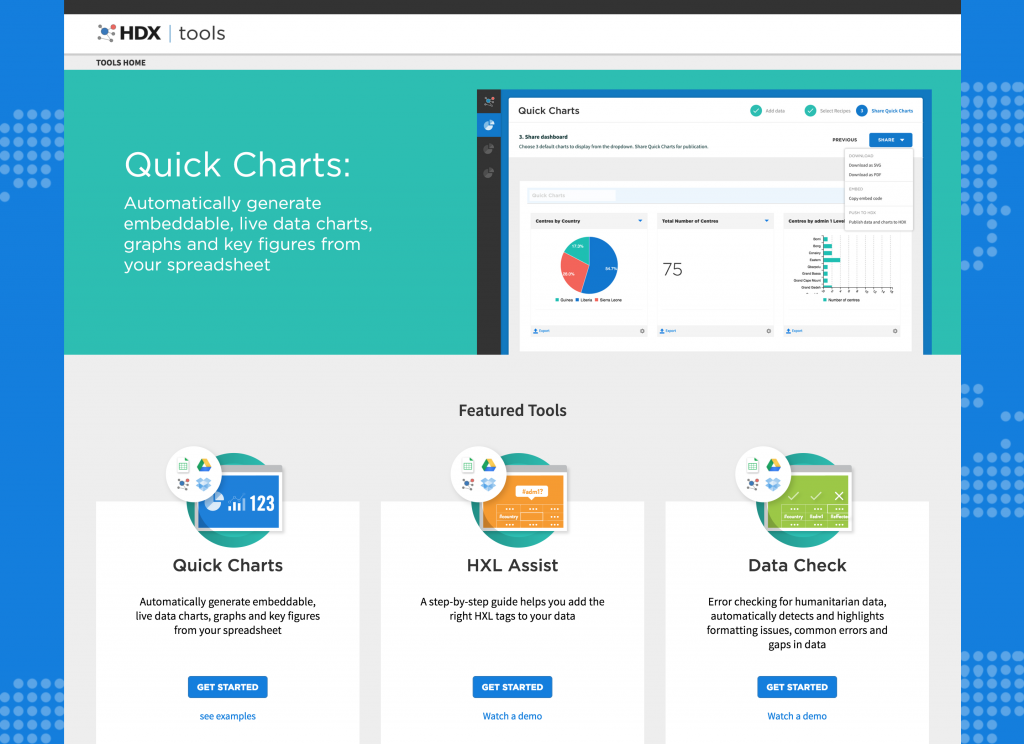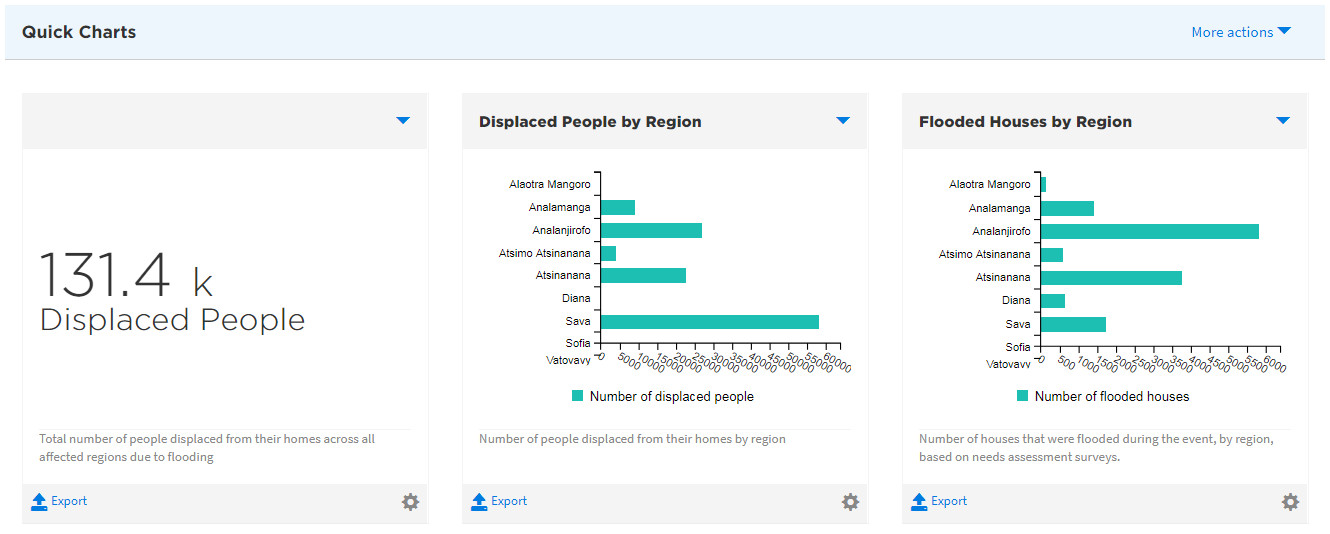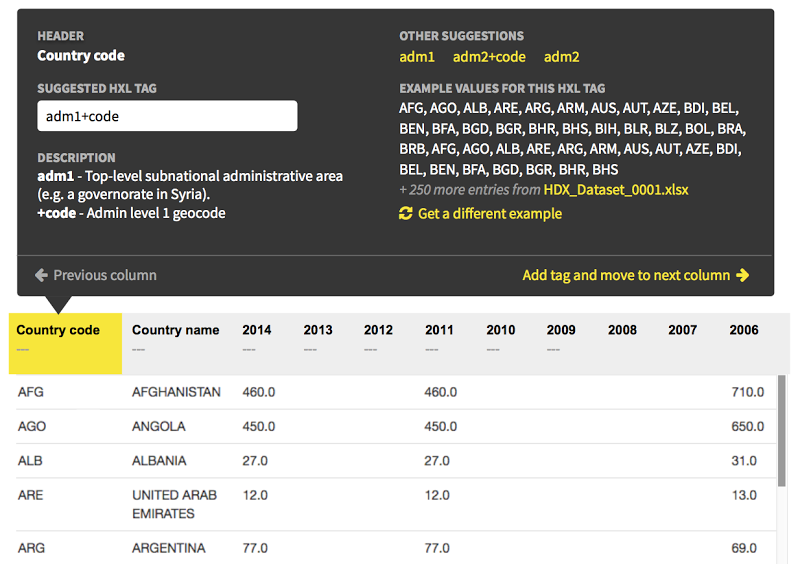Share
In Part 1, we shared the HDX Tools survey results. Here in Part 2, we share the actions we have already taken (including launching Quick Charts!) and the actions we will continue to take in the coming months to build out the rest of these tools.
The HDX Tools survey results provided us with a lot of rich information to guide our work. Over the past few months, we have been thinking through how to sequence the release of these tools, and what approach we should use for technical development. We have also been keeping our designer busy imagining a number of new interfaces.
To recap, we asked humanitarian data providers about five tool concepts:
- Quick Charts – Instant, simple charting for single datasets
- Quick Maps – Easy, visual mapping with multiple datasets
- Data Check – Rule-driven error checking for humanitarian data, supporting existing workflows
- Data Remix – Combining, modifying multiple datasets (database-like control without the database)
- HXL Tag Assist – A module for helping users add the right HXL hashtags to their data
HDX Tools
Our first decision was to make all of these tools available through a new tools.humdata.org domain (coming soon). From there, users will be able to access the various tools as they are released and eventually as part of an end-to-end workflow. The tools will work with data that is stored on HDX, the cloud or local machines. The only requirement will be that the data includes HXL hashtags.

We have been working to develop HXL for a number of years. Some of you may remember HXL’s first iteration in 2012, when it was based on a linked open data framework. The second iteration simplified the standard dramatically to work by inserting hashtags at the top of spreadsheet columns. The goal is to make data easier to work by automating data processing and increasing interoperability between sources. Almost 40 organizations have added HXL to their data and shared it on HDX.
So far, the dilemma for increasing adoption has been whether we first focus on adding incentives like data cleaning and visualization, or if we focus on making it easier to add the hashtags in the first place. As it is, there isn’t a lot you can do with HXL unless you are a superstar like Simon Johnson at the British Red Cross and have figured out how to use it to power your dashboards.
The Roadmap

We decided to create the incentives for using HXL first. Our initial offering is Quick Charts. Simple, automatic charting is enabled when a dataset includes HXL hashtags. The system compares the hashtags in the dataset to a set of ‘recipes’ to see what kind of charts and summary figures it can propose. Once created, the charts are displayed at the top of the dataset page where they can be modified and embedded on other websites. You can read more about how it works in Introducing ‘Quick Charts’: Simple Charting For Datasets.

Next on our roadmap is the HXL Tag Assist. This tool will help data managers add the right hashtags to their dataset by offering suggestions based on a set of rules. Users will be able to explore different hashtag combinations, and will be given examples of how other data managers have used them.

From there, we will work on the more difficult implementations of Data Check, Data Remix and finally Quick Maps. Of course, we would love to release Quick Maps now, but it depends on the ability to quickly combine clean data from many sources. For this, we will need HXL and geodata services.
Success Factors?
We asked survey respondents what one thing would have the greatest impact on the success of the HDX Tools effort. The responses fell into a number of categories: compatibility, ease of use, awareness and training, and ongoing feedback and support. One response stood out for me as cautionary advice: “Humanitarians inhabit a toolkit graveyard, where so many great data tools have gone to die for being forgotten.”
We know that this risk also applies to HDX Tools, which is why we took the time to understand user needs and think through how we will gain adoption. We hope that we can count on all of you to give us feedback as we deliver on the roadmap. If you think we are off track, we want to hear from you. You can always reach us at hdx@un.org or @humdata.